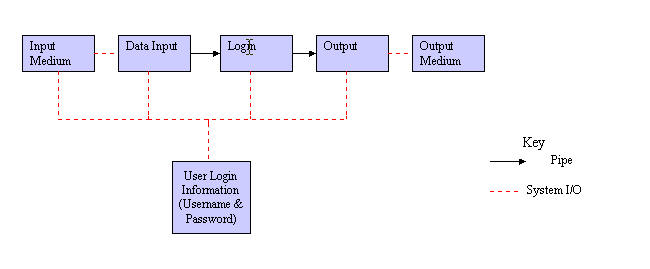|
DESIGN
RATIONALE
The requirements that are satisfied through design #2, the Login Sub-system,
are listed below:
Functional
Requirements
First
Requirement #2 was accomplished by
utilizing the Pipe and Filter architecture approach described above to
design the Login Sub-system.
Requirement #7 was satisfied by using the user's login information
coupled with the Database Management Systems security features (i.e. user
roles) to give the user permission to view other member's public data after
login.
Usability Requirements
Requirement #8 can be satisfied by
displaying help information as an HTML file with hyperlinks to the user
agent after the Login process so that new members can familiarize
themselves with the system. Using a windows based login screen, as
shown in the Screen Shots and Site Map section, satisfied
requirement #9.
Reliability Requirements
As stated in the Registration section ,
requirement #10 (the applications server is available 95% of the time)
was not directly related to this section of the architecture.
However, the requirement can be addressed by producing a message that
displays a HTML document to the user agent during the 5% of down time.
For instance, in the event the user is attempting to login/sign on to the
system during system maintenance the login sub-system will display a HTML
document to the user agent stating, "The System is unavailable please Sign
on at later time".
Performance Requirements
For
both Requirements 12 and
Requirement 13, the login process
should adhere to the performance time constraints and should not hinder
the user experience. The login design is not expected to satisfy
these requirements only to address them as a performance standard.
Identical to the Registration Sub-system section, utilizing the Pipe and
Filter architecture approach had several advantages. They are as follows:
the intuitive flow of processing the user login information from the
initial input via the client application to the systems output to the user
agent yielded a good fit for this architectural approach.
Additionally, the ease of adding functionality if new filters are needed in
the future is an advantage as well as the pipe and filter's strong support
of reuse. On the other, the disadvantage of this
architecture approach for the login section is the fact that the filter must
copy all the data to its out ports, which causes the space to be utilized
inefficiently (1). Consequently, the
speed of the network connection could negatively impact the communication
between the client (user agent) and server. |
